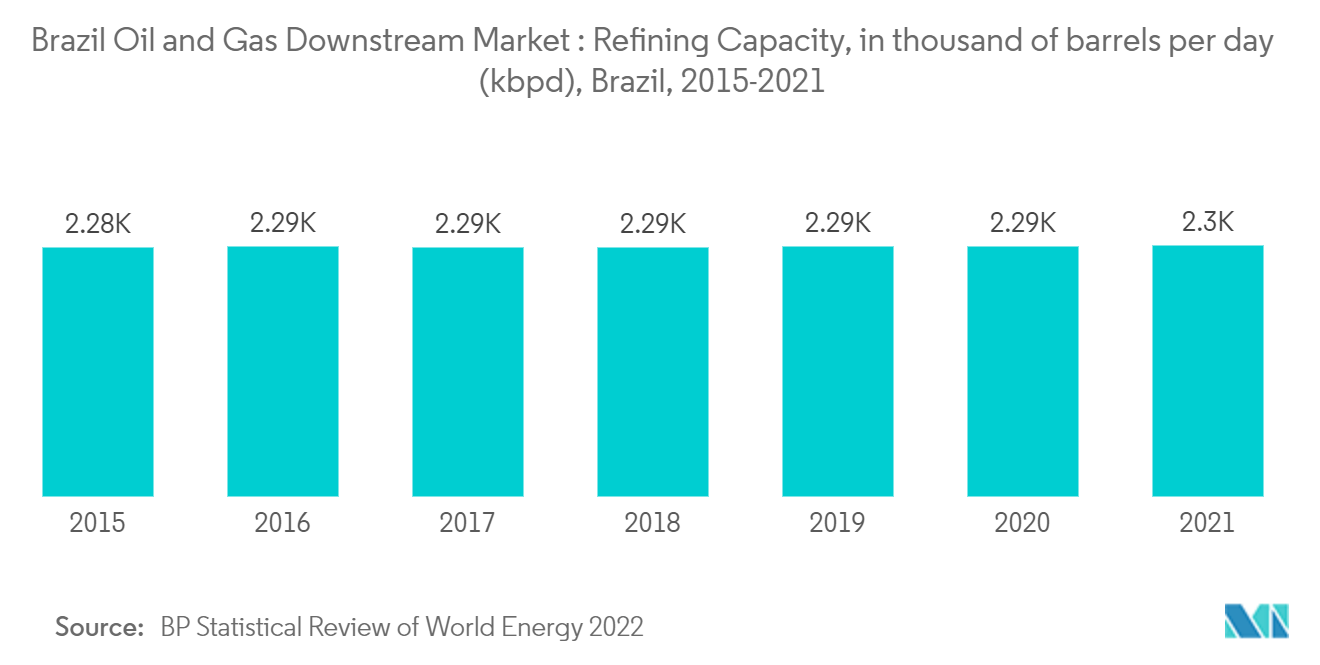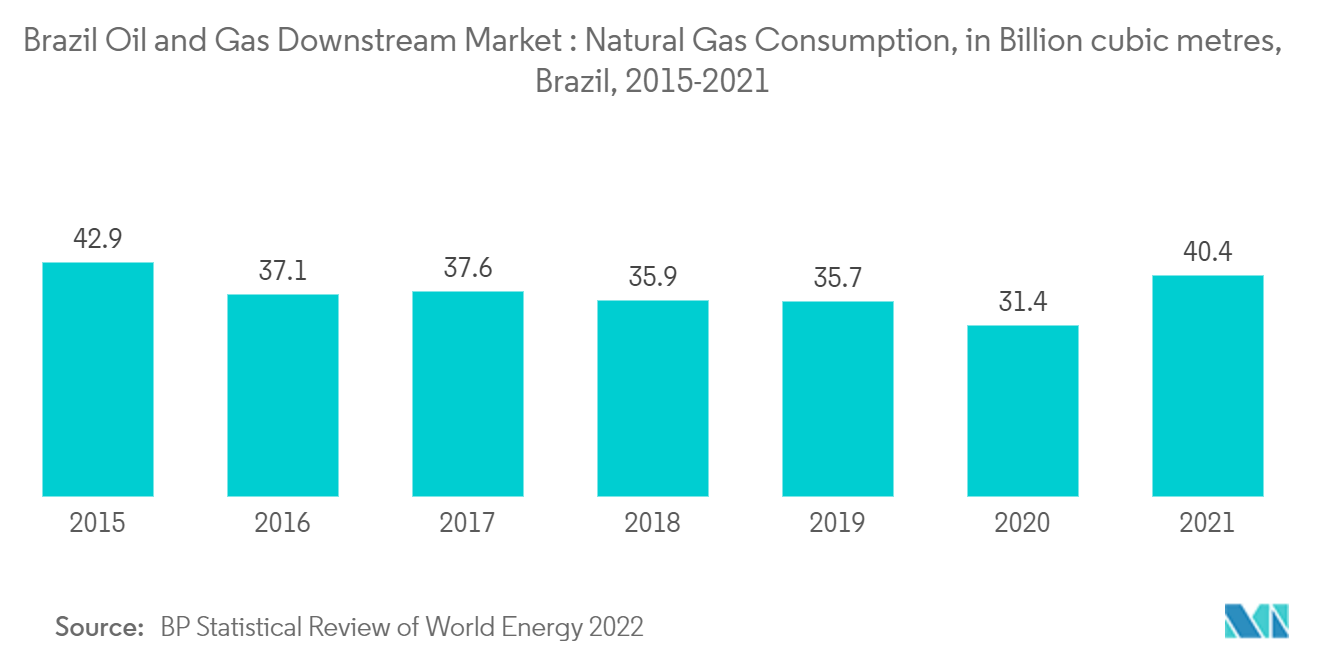Market Trends of Brazil Oil and Gas Downstream Industry
This section covers the major market trends shaping the Brazil Oil & Gas Downstream Market according to our research experts:
Refineries Segment to Witness Significant Growth
- In Brazil, the capacity of refineries had increased from 2285 thousand barrels per day (kb/d) in 2018 to 2303 kb/d in 2021. On the other hand, the refinery throughput increased by 2.8% from 1769 kb/d, in 2020 to 1818 kb/d, in 2021.
- More than 94% of Brazil's oil reserves are offshore, with 80% of total reserves concentrated near Rio de Janeiro. The next greatest accumulation of reserves lies off the coast of Espirito Santo state, and it includes approximately 10% of the country's oil reserves. Reserves are projected to increase as companies continue to explore pre-salt deposits. With the exploration of new oil reserves, production of oil and gas is likely to increase, which, in turn, will drive the refineries segment's demand in the forecast period.
- In January 2022, Petrobras, the Brazilian state-owned oil company, intends to increase refinery maintenance spending to record levels in 2022, owing to continuing refinery sales and ULSD expansion projects. Petrobras anticipates spending USD 460 million in 2022, breaking the previous high of USD 420 million achieved in 2021. Despite the shutdowns, Petrobras said that refinery utilization reached its highest level in five years in 2021, at 83% of capacity.
- Oil consumption increased by 5.3% from 97.4 million tons in 2020 to 102.2 million tons in 2021. With the increase in oil consumption, liquid supply and investment in refining projects are expected to drive the refining segment in the forecast period.
- Brazil's oil and gas downstream industry was expected to grow slightly in the forecast period due to the privatization of refineries and an increase in the demand for refined petroleum products.

Increasing Oil and Gas Consumption to Drive the Market
- According to the Brazilian Association of Piped Gas Distributors, natural gas consumption in Brazil increased by 28.82% in 2021 compared to 2020, with industrial demand already exceeding pre-pandemic levels.
- Natural Gas consumption in the country increased, by 28.6%, from 31.4 Billion cubic meters in 2020 to 40.4 Billion cubic meters in 2021. Brazilian oil and natural gas consumption increases are likely to drive the gas downstream market in the forecast period due to the requirement for gas processing plants.
- Moreover, in January 2022, With ongoing refinery sales and ULSD expansion projects, Brazil's state-run oil firm Petrobras intends to increase expenditure on refinery maintenance to record levels in 2022. Overtaking the previous high of USD 420 million set in 2021, Petrobras anticipates spending USD 460 million in 2022.
- In February 2022, Brazilian independent 3R and Brazil's state-owned Petrobras agreed to pay USD 1.38 billion to allow 3R to purchase a refinery and 22 oil and gas-producing properties in the country's north. The Potiguar basin cluster's sale is a component of Petrobras' aim to sell off USD 15 billion to USD 25 billion in non-core assets by the year 2026.
- Therefore, based on the above-mentioned factors, increasing oil and gas consumption and investments as well as expansion of new projects is expected to drive market growth in the coming years.


